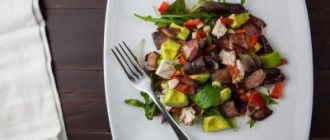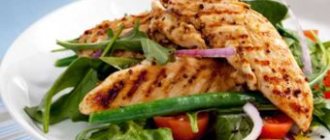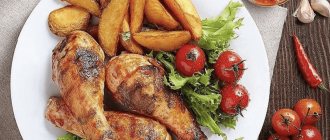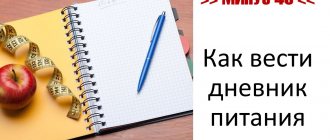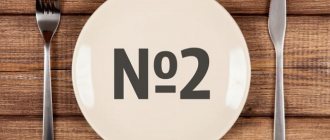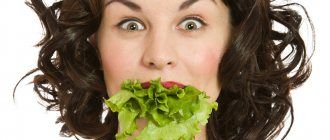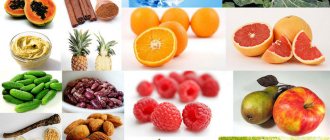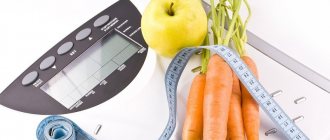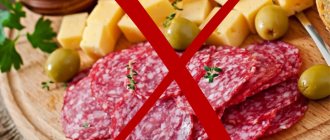General rules
The age of forty for a man is a kind of “Rubicon”, a turning point in his life, which is often defined as a “ midlife crisis ”. At this age, a man rethinks his place in the socio-psychological space and physiological changes in his body. By this period of life, the vast majority of average men come with a physiological loss of muscle mass, a decrease in overall metabolism, androgen deficiency (reduced production of male sex hormones), including testosterone , which causes a change in emotional state, decreased sexual function (decreased libido/potency ).
In addition, an unhealthy lifestyle (physical inactivity/lack of physical activity, alcohol abuse, smoking, uncontrolled consumption of fatty foods, increased body weight, chaotic/disorderly eating, chronic fatigue due to career/work, sexual diseases) make this age dangerous. for men. Gradually, men develop abdominal fat deposits and develop metabolic syndrome : increased cholesterol , blood pressure , and impaired carbohydrate metabolism.
Of course, all these changes in the body are unpleasant and many men cannot come to terms with the fact that they are no longer the same as they were 10 years ago. This approach is dangerous and leads to prolonged depression , worsening functional disorders, and subsequently to the development of diseases. It is much more productive to realize that the aging of the body is a natural physiological process and an integral part of life (we have to, like the fruits of trees/the fruits of the earth, wither and fall off) and make some efforts to reduce the impact of risk factors on our health. Life doesn’t stop after 40, and it’s better to rely on constant care of your health. First of all, this is a change in a man’s lifestyle - increasing physical activity, giving up bad habits, reducing neuropsychic stress, correcting body weight/rational nutrition.
Thus, properly organized nutrition for a man after 40 years of age can significantly reduce the manifestations of existing physiological disorders and the risk of their development. A diet for a 40-year-old man does not provide for strict restrictions; rather, we are talking about organizing a rational, balanced diet for men with a body weight that corresponds to the physiological norm. Those whose weight exceeds the norm, first of all, need to correct their weight and then maintain it at the desired level.
For weight loss, a hypocaloric diet is prescribed with an energy deficit (relative to calorie expenditure) of 400-600 kcal/day, which allows you to lose weight without stress to the body within 500 g per week. A more accelerated rate of weight loss is not justified, since it is extremely difficult to achieve long-term weight stabilization and, moreover, the process is accompanied by a pronounced feeling of hunger, general weakness, decreased performance, headache , and mental discomfort. A low-calorie diet for a man after 40 years of age should be focused on 1800-2000 kcal per day.
It must be said right away that the so-called “women’s diets” - those based on buckwheat and kefir, fruits or vegetables, apples and low-fat cottage cheese and similar diets - are absolutely not suitable for men. The main requirement for weight loss diets for men at this age is the inclusion in the diet of a complete (at the physiological norm) quota of protein - at least 90-100 g/day (white fish, lean meat, egg whites, cottage cheese, low-fat fermented milk products).
Reduction of caloric intake is carried out by excluding from the diet foods containing saturated fats (fast food products, fatty meats, canned food, solid fats, smoked meats, fatty dairy products) and simple carbohydrates (sugar, sweets, baked goods, confectionery/bakery products). The diet of men at this age should contain as little as possible foods rich in cholesterol , and it is also necessary to avoid processed foods and fatty meats.
In addition to micronutrients, it is important to ensure in the diet a sufficient content of essential amino acids , vitamins /minerals, PUFAs (in particular, omega 3 ), the deficiency of which reduces the metabolic . Special attention should be given to fish and seafood. It is recommended to include in your diet at least 2 times a week fatty red fish, shrimp, crabs, mussels, squid, which contain not only complete amino acids and PUFAs, but are also rich in various microelements, including zinc, which is extremely important for production of male sex hormones.
The menu of a 40-year-old man must include a variety of vegetables; all types of cabbage, celery, tomatoes, carrots, pumpkin, and garden herbs (parsley, leeks, garlic, spinach) are especially useful. Pumpkin seeds are also a good source of zinc, which should be consumed regularly raw or dried. Healthy fruits include yellow and orange fruits, which contain lutein , which is also necessary in the synthesis of testosterone .
After 40 years of age, men have an increased risk of developing cardiovascular diseases. Accordingly, the diet should contain foods rich in calcium, potassium, magnesium, phosphorus, which are found in dairy products (cottage cheese, hard cheeses), vegetables (potatoes, legumes, cabbage, tomatoes, pumpkin), fruits (grapes, raisins, bananas, dried apricots), nuts and seeds. Seaweed and other seaweed are extremely beneficial and are recommended to be consumed 2-3 times a week. The presence in the diet of cold-pressed vegetable oils rich in vitamin E (olive, flaxseed, sunflower) is also important.
Separately, it is necessary to dwell on alcohol. It is necessary to minimize the consumption of beer, since the phytoestrogens are analogues of the female hormone - estrogen, which triggers the process of obesity in the male body (beer belly). The preferred alcohol for men is dry red wine and cognac, which are recommended to be consumed in small quantities.
It is also recommended to switch to more gentle methods of culinary processing of foods, in particular, boiling, baking, stewing, reducing the consumption of fried and smoked foods. These cooking methods will not only preserve the maximum amount of vitamins and microelements, but will also give the dish a new taste. If blood pressure and periodically increases, it is recommended to limit the consumption of salt and salty foods. At the same time, rock salt must be replaced with sea salt. It is equally important to consume at least 1.5-2. l/day of free liquid, mainly in the form of green tea, freshly prepared juices, herbal teas, still mineral waters, rosehip decoction. It is advisable to reduce coffee consumption. In the absence of contraindications, you can periodically practice fasting days (vegetable, kefir, fruit, cottage cheese), avoiding complete fasting.
Proper diet and nutrition for men after 40 years
Home — Blog — Proper diet and nutrition for men after 40 years
Every man dreams of having a slim and toned body. However, with age, the human body undergoes certain changes, which affects not only health, but also appearance. This is mainly due to metabolic disorders due to poor nutrition, existing bad habits and lack of regular physical activity. Men after 40 quickly gain weight, but getting rid of extra pounds is much more difficult. This article will tell you how to eat properly so that weight loss occurs without negative consequences for your health.
Proper nutrition and diet for men after 40 years guarantees excellent health, good immunity and long life. Therefore, it is very important to be careful about your diet.
What is the secret of proper nutrition?
There are many different diets that guarantee effective and quick results. However, all these crash diets do not bring any benefit. Yes, a person can lose a couple of kilograms, but he will quickly gain them back, returning to his usual lifestyle. The essence of healthy weight loss is not only about limiting certain foods.
Nutrition should be balanced. And in each individual case it is necessary to take into account the characteristics of the organism. For example, men who lead an active lifestyle and at the same time limit themselves in food only harm their body. A lack of vitamins and nutrients leads to poor health and the appearance of various ailments. If you want to limit yourself in calories, then you need to make sure that the diet is balanced and contains many useful substances: vitamins, microelements and fiber.
At first glance, it seems that leading a healthy lifestyle is difficult. But, as soon as a person begins to monitor his diet, eating only healthy foods, he immediately feels a surge of strength. The easiest way to get your body in order is to arrange fasting days (1-2 times a week). A proper fasting day helps the body become saturated with beneficial vitamins and microelements, as well as improve the functioning of the gastrointestinal tract.
Microelements and vitamins that the male body needs
After 40, the body loses such an important element as calcium. With its deficiency, the bones become fragile, the skin becomes flabby, and the functioning of the cardiovascular system is disrupted. After 40 years, the body poorly absorbs vitamins (A, B, C, E) and microelements (zinc and selenium). All this seriously affects human health. He becomes susceptible to various infectious diseases and often feels unwell if he does not replenish the lack of nutrients with food.
Products that are recommended to be consumed after 40 years: 1. Products that contain calcium (cottage cheese, cheese, kefir, milk, sorrel, spinach, whole grain bread with bran). 2. Vegetable protein. It can be found in legume products (beans, peas). 4. Everyone knows the benefits of seafood. After all, it is a good source of iodine and various trace elements that are necessary for the normal functioning of the body (oysters, squid, mussels). 5. As for fish, you need to choose low-fat varieties and, best of all, sea fish. 6. Vegetables are useful at any age, especially fresh, as well as fruits. Therefore, they need to be consumed daily. 7. Nuts are a real storehouse of nutrients. In addition, nuts perfectly satisfy the feeling of hunger, and therefore they are best eaten in the morning or during snacks.
The role of detox programs in the nutrition of men after 40
A combined detox program helps improve the functioning of the gastrointestinal tract, speed up metabolism and saturate the body with useful microelements and vitamins.
Detox programs can be used both as fasting days and for nutrition during weight loss. On our website you will find many detox programs that will help you lose extra pounds and support your body with a dose of nutrients. All of them are formulated according to the needs of the human body and are made from plant ingredients.
If you want to learn more about detox and try its wonderful properties for yourself, go to the main page of our website and choose the program you like!
Authorized Products
A diet for a 40-year-old man includes:
- Rye/whole grain bread, crispbread, oatmeal cookies.
- Various types of sea/river fish and seafood (shrimp, crabs, mussels, squid).
- Dietary meat of rabbit, domestic chicken, turkey, veal, beef.
- Fermented milk/dairy products with minimal fat content (cheese, cottage cheese, milk, kefir, acidophilus milk, fermented baked milk).
- Chicken/quail eggs in any form.
- A variety of vegetable crops (green peas, cucumber, bell peppers, spinach, garlic, asparagus, zucchini, celery, onions, green beans, all types of cabbage, lettuce, garden greens in raw, stewed and boiled form). Seaweed and other types of algae.
- Virgin vegetable oils (sunflower, flaxseed, olive), various seeds/nuts, dried fruits, bee products.
- Fruits/berries (oranges, avocados, cherries, pears, pineapples, kiwi, grapefruit, tangerines, nectarines, lemons, mangoes, feijoas, pomelo, plums, cherries, baked sweet and sour apples, raspberries, strawberries, black and red currants, grapes ).
- Herbal tea, freshly prepared juices, still mineral water, green tea, rosehip infusion.
Table of permitted products
| Proteins, g | Fats, g | Carbohydrates, g | Calories, kcal | |
Vegetables and greens | ||||
| vegetables legumes | 9,1 | 1,6 | 27,0 | 168 |
| greenery | 2,6 | 0,4 | 5,2 | 36 |
| boiled peas | 6,0 | 0,0 | 9,0 | 60 |
| zucchini | 0,6 | 0,3 | 4,6 | 24 |
| broccoli | 3,0 | 0,4 | 5,2 | 28 |
| Brussels sprouts | 4,8 | 0,0 | 8,0 | 43 |
| cabbage | 1,2 | 0,2 | 2,0 | 16 |
| cauliflower | 2,5 | 0,3 | 5,4 | 30 |
| potato | 2,0 | 0,4 | 18,1 | 80 |
| watercress | 2,3 | 0,1 | 1,3 | 11 |
| red onion | 1,4 | 0,0 | 9,1 | 42 |
| bulb onions | 1,4 | 0,0 | 10,4 | 41 |
| carrot | 1,3 | 0,1 | 6,9 | 32 |
| cucumbers | 0,8 | 0,1 | 2,8 | 15 |
| olives | 0,8 | 10,7 | 6,3 | 115 |
| salad pepper | 1,3 | 0,0 | 5,3 | 27 |
| arugula | 2,6 | 0,7 | 2,1 | 25 |
| celery | 0,9 | 0,1 | 2,1 | 12 |
| tomatoes | 0,6 | 0,2 | 4,2 | 20 |
| dill | 2,5 | 0,5 | 6,3 | 38 |
| garlic | 6,5 | 0,5 | 29,9 | 143 |
Fruits | ||||
| apricots | 0,9 | 0,1 | 10,8 | 41 |
| avocado | 2,0 | 20,0 | 7,4 | 208 |
| watermelon | 0,6 | 0,1 | 5,8 | 25 |
| melon | 0,6 | 0,3 | 7,4 | 33 |
| nectarine | 0,9 | 0,2 | 11,8 | 48 |
| peaches | 0,9 | 0,1 | 11,3 | 46 |
| baked sweet and sour apples | 0,5 | 0,5 | 12,3 | 59 |
Berries | ||||
| strawberry | 0,8 | 0,4 | 7,5 | 41 |
| raspberries | 0,8 | 0,5 | 8,3 | 46 |
Mushrooms | ||||
| mushrooms | 3,5 | 2,0 | 2,5 | 30 |
Cereals and porridges | ||||
| buckwheat (kernel) | 12,6 | 3,3 | 62,1 | 313 |
| oatmeal with water | 3,0 | 1,7 | 15,0 | 88 |
| cereals | 11,9 | 7,2 | 69,3 | 366 |
| pearl barley | 9,3 | 1,1 | 73,7 | 320 |
| wheat bran | 15,1 | 3,8 | 53,6 | 296 |
| barley grits | 10,4 | 1,3 | 66,3 | 324 |
Bakery products | ||||
| whole grain bread | 10,1 | 2,3 | 57,1 | 295 |
Raw materials and seasonings | ||||
| ginger | 1,8 | 0,8 | 15,8 | 80 |
| honey | 0,8 | 0,0 | 81,5 | 329 |
Dairy | ||||
| kefir 1% | 2,8 | 1,0 | 4,0 | 40 |
Cheeses and cottage cheese | ||||
| cheese | 24,1 | 29,5 | 0,3 | 363 |
| cottage cheese | 17,2 | 5,0 | 1,8 | 121 |
| cottage cheese 1% | 16,3 | 1,0 | 1,3 | 79 |
Meat products | ||||
| boiled beef tongue | 23,9 | 15,0 | 0,0 | 231 |
| lean beef | 22,2 | 7,1 | 0,0 | 158 |
| veal | 19,7 | 1,2 | 0,0 | 90 |
| rabbit | 21,0 | 8,0 | 0,0 | 156 |
Bird | ||||
| boiled chicken breast | 29,8 | 1,8 | 0,5 | 137 |
| steamed chicken breast | 23,6 | 1,9 | 0,0 | 113 |
| boiled chicken fillet | 30,4 | 3,5 | 0,0 | 153 |
| turkey | 19,2 | 0,7 | 0,0 | 84 |
Eggs | ||||
| chicken eggs | 12,7 | 10,9 | 0,7 | 157 |
| hard-boiled chicken eggs | 12,9 | 11,6 | 0,8 | 160 |
Fish and seafood | ||||
| pink salmon | 20,5 | 6,5 | 0,0 | 142 |
| squid | 21,2 | 2,8 | 2,0 | 122 |
| shrimps | 22,0 | 1,0 | 0,0 | 97 |
| salmon | 19,8 | 6,3 | 0,0 | 142 |
| mussels | 9,1 | 1,5 | 0,0 | 50 |
| seaweed | 0,8 | 5,1 | 0,0 | 49 |
| zander | 19,2 | 0,7 | — | 84 |
| cod | 17,7 | 0,7 | — | 78 |
| trout | 19,2 | 2,1 | — | 97 |
| hake | 16,6 | 2,2 | 0,0 | 86 |
| pike | 18,4 | 0,8 | — | 82 |
Oils and fats | ||||
| vegetable oil | 0,0 | 99,0 | 0,0 | 899 |
| butter | 0,5 | 82,5 | 0,8 | 748 |
| linseed oil | 0,0 | 99,8 | 0,0 | 898 |
Non-alcoholic drinks | ||||
| mineral water | 0,0 | 0,0 | 0,0 | — |
| instant chicory | 0,1 | 0,0 | 2,8 | 11 |
| green tea | 0,0 | 0,0 | 0,0 | — |
Juices and compotes | ||||
| rose hip juice | 0,1 | 0,0 | 17,6 | 70 |
| * data is per 100 g of product | ||||
Fully or partially limited products
A diet for a 40-year-old man excludes from the diet:
- Fatty meat and products made from it (smoked meats, ham, canned meat, sausages, bacon), semi-finished meat products, offal, fast food products.
- Canned fish.
- Pasta made from soft flours, white rice.
- Products that contain easily digestible carbohydrates (confectionery, candy, sugar, waffles, jam, condensed milk, semolina, ice cream, sweet drinks, jam).
- Solid fats (pork, lamb, beef fat), mayonnaise, high-fat dairy/fermented milk products (cheese, cream, sour cream, cottage cheese), waterfowl meat - duck, goose.
- Salt, preserves, and salty foods are limited.
- Strong coffee, sweet carbonated drinks, alcohol.
Table of prohibited products
| Proteins, g | Fats, g | Carbohydrates, g | Calories, kcal | |
Vegetables and greens | ||||
| potato | 2,0 | 0,4 | 18,1 | 80 |
| horseradish | 3,2 | 0,4 | 10,5 | 56 |
Fruits | ||||
| melon | 0,6 | 0,3 | 7,4 | 33 |
| figs | 0,7 | 0,2 | 13,7 | 49 |
| mango | 0,5 | 0,3 | 11,5 | 67 |
Berries | ||||
| grape | 0,6 | 0,2 | 16,8 | 65 |
Nuts and dried fruits | ||||
| raisin | 2,9 | 0,6 | 66,0 | 264 |
| dates | 2,5 | 0,5 | 69,2 | 274 |
Snacks | ||||
| potato chips | 5,5 | 30,0 | 53,0 | 520 |
Cereals and porridges | ||||
| porridge | 3,3 | 1,2 | 22,1 | 102 |
| white rice | 6,7 | 0,7 | 78,9 | 344 |
Flour and pasta | ||||
| pasta | 10,4 | 1,1 | 69,7 | 337 |
| pancakes | 6,1 | 12,3 | 26,0 | 233 |
| vareniki | 7,6 | 2,3 | 18,7 | 155 |
| pancakes | 6,3 | 7,3 | 51,4 | 294 |
| dumplings | 11,9 | 12,4 | 29,0 | 275 |
Bakery products | ||||
| buns | 7,2 | 6,2 | 51,0 | 317 |
| wheat bread | 8,1 | 1,0 | 48,8 | 242 |
Confectionery | ||||
| jam | 0,3 | 0,2 | 63,0 | 263 |
| jam | 0,3 | 0,1 | 56,0 | 238 |
| candies | 4,3 | 19,8 | 67,5 | 453 |
| cookie | 7,5 | 11,8 | 74,9 | 417 |
| cake | 3,8 | 22,6 | 47,0 | 397 |
| jam | 0,4 | 0,2 | 58,6 | 233 |
| dough | 7,9 | 1,4 | 50,6 | 234 |
| halva | 11,6 | 29,7 | 54,0 | 523 |
Cakes | ||||
| cake | 4,4 | 23,4 | 45,2 | 407 |
Chocolate | ||||
| chocolate | 5,4 | 35,3 | 56,5 | 544 |
Raw materials and seasonings | ||||
| seasonings | 7,0 | 1,9 | 26,0 | 149 |
| mustard | 5,7 | 6,4 | 22,0 | 162 |
| mayonnaise | 2,4 | 67,0 | 3,9 | 627 |
| sugar | 0,0 | 0,0 | 99,7 | 398 |
| vinegar | 0,0 | 0,0 | 5,0 | 20 |
Dairy | ||||
| milk | 3,2 | 3,6 | 4,8 | 64 |
| milk 3.2% | 2,9 | 3,2 | 4,7 | 59 |
| condensed milk | 7,2 | 8,5 | 56,0 | 320 |
Cheeses and cottage cheese | ||||
| amber processed cheese | 7,0 | 27,3 | 4,0 | 289 |
| cottage cheese 18% (fat) | 14,0 | 18,0 | 2,8 | 232 |
Meat products | ||||
| fatty pork | 11,4 | 49,3 | 0,0 | 489 |
| pork fat | 1,4 | 92,8 | 0,0 | 841 |
| salo | 2,4 | 89,0 | 0,0 | 797 |
| bacon | 23,0 | 45,0 | 0,0 | 500 |
Sausages | ||||
| boiled sausage | 13,7 | 22,8 | 0,0 | 260 |
| smoked sausage | 28,2 | 27,5 | 0,0 | 360 |
| smoked sausage | 9,9 | 63,2 | 0,3 | 608 |
| sausages | 10,1 | 31,6 | 1,9 | 332 |
| sausages | 12,3 | 25,3 | 0,0 | 277 |
Bird | ||||
| smoked chicken | 27,5 | 8,2 | 0,0 | 184 |
| duck | 16,5 | 61,2 | 0,0 | 346 |
| goose | 16,1 | 33,3 | 0,0 | 364 |
Fish and seafood | ||||
| salted fish | 19,2 | 2,0 | 0,0 | 190 |
| caviar | 36,0 | 10,2 | 0,0 | 123 |
| cod roe | 24,0 | 0,2 | 0,0 | 115 |
| canned fish | 17,5 | 2,0 | 0,0 | 88 |
| semi-finished fish products | 12,5 | 6,7 | 14,7 | 209 |
Oils and fats | ||||
| creamy margarine | 0,5 | 82,0 | 0,0 | 745 |
| coconut oil | 0,0 | 99,9 | 0,0 | 899 |
| vegetable-fat spread | 0,0 | 40,0 | 0,0 | 360 |
| animal fat | 0,0 | 99,7 | 0,0 | 897 |
| cod liver oil | 0,0 | 99,8 | 0,0 | 898 |
| cooking fat | 0,0 | 99,7 | 0,0 | 897 |
Alcoholic drinks | ||||
| white dessert wine 16% | 0,5 | 0,0 | 16,0 | 153 |
| vodka | 0,0 | 0,0 | 0,1 | 235 |
| liquor | 0,3 | 1,1 | 17,2 | 242 |
| beer | 0,3 | 0,0 | 4,6 | 42 |
Non-alcoholic drinks | ||||
| cola | 0,0 | 0,0 | 10,4 | 42 |
| coffee | 0,2 | 0,0 | 0,3 | 2 |
| Pepsi | 0,0 | 0,0 | 8,7 | 38 |
| sprite | 0,1 | 0,0 | 7,0 | 29 |
| energy drink | 0,0 | 0,0 | 11,3 | 45 |
| * data is per 100 g of product | ||||
Obesity in men. How to help a patient: practical advice
12.01.2020
2765
0
| E.Yu. Gritskevich , endocrinologist, andrologist (Moscow) |
During the urological Internet conference No. 6, endocrinologist, andrologist and weight loss specialist Elena Yurievna Gritskevich made a report on possible approaches to solving the problem of obesity.
According to the WHO definition, obesity is a chronic disease, heterogeneous in etiology and clinical manifestations, progressive in its natural course, characterized by excessive deposition of fat mass in the body and a relapsing nature
What is more accurate: BMI or waist circumference?
A tool for assessing the presence and severity of obesity is the body mass index (BMI) - the ratio of body weight in kilograms to the square of height in meters (kg/m2). According to WHO, a diagnosis of overweight or obesity is made in adults in the following cases:
- BMI greater than or equal to 25 – overweight;
- BMI greater than or equal to 30 – obesity;
- Waist circumference more than 94 cm.
However, it should be remembered that even with a BMI above normal, a patient can have a large percentage of muscle mass, and therefore not suffer from obesity. In some cases, focusing on waist circumference may be more reasonable.
If previously men lagged behind women in the prevalence of obesity, today its prevalence rates are almost equal between the sexes.
Patient examination algorithm
Individually, according to indications, a number of laboratory examination methods can be used in obese patients:
- performing a glucose tolerance test;
- lipid profile (total cholesterol, triglycerides, HDL, LDL);
- liver function indicators (bilirubin and its fractions, ALT, AST, alkaline phosphatase);
- determination of thyroid function (TSH, sT4);
- overnight dexamethasone test with one mg of dexamethasone if endogenous hypercortisolism is suspected;
- testosterone, prolactin, FSH, LH, estradiol, SHBG;
- C-peptide and insulin for suspected hyperinsulinemia (eg, insulinoma, nesidoblastosis, etc.).
Among the instrumental examination methods that can be used are:
- bioimpedansometry;
- Ultrasound of the abdominal organs and kidneys;
- Ultrasound of the thyroid gland;
- Ultrasound of the pelvic organs (scrotum);
- ECG;
- ECHO-KG;
- 24-hour blood pressure monitoring, ECG monitoring;
- radiography of the skull, sella turcica;
- polysomnography;
- MRI of the pituitary gland with contrast enhancement;
- MRI of the brain.
Which diet is better?
The basic principles of weight loss are a balanced diet, physical activity, normalization of carbohydrate, lipid and other types of metabolism if they are disturbed, if necessary, drug therapy, and in case of morbid obesity, bariatric surgery.
The most appropriate diet therapy for weight loss should be safe, effective and something that the patient can adhere to. Meals should include all major food groups. It is recommended to monitor the food eaten in the form of a food diary, which also records daily physical activity. Individual food preferences, eating behaviors and eating patterns must be taken into account, as well as cultural background, food traditions and availability, timing and financial concerns, food knowledge and culinary skills.
Low-calorie, fat-restricted diets lead to greater reductions in total and LDL cholesterol, while carbohydrate-restricted diets lead to greater reductions in serum triglycerides and increases in HDL cholesterol, as well as greater reductions in serum glucose HbA1c.
Separately, Elena Yuryevna mentioned the “Mediterranean” diet, which is not a specific diet, but rather a generalized term for several food options that are often found in Greece, Italy and Spain. The Mediterranean diet has the most consistent and robust scientific support for reducing the risk of atherosclerotic cardiovascular disease. There are a number of basic principles of such a diet:
- olive oil as the main source of fat;
- consumption of vegetables, legumes, whole grains, nuts and seeds;
- moderate consumption of red wine;
- moderate consumption of seafood, dairy products (cheese and yogurt), poultry and eggs;
- limiting the consumption of red meat, meat products and sweets.
You can also consider the DASH (Dietary Approach to Stop Hypertension) diet, developed by the US National Heart, Lung, and Blood Institute, mainly to correct high blood pressure. It prefers vegetables, fruits and whole grains, low-fat or low-fat dairy products , fish, poultry, lean meats, nuts, seeds and legumes, as well as fiber and minerals, particularly calcium, potassium and magnesium. Limit intake of sodium (1500–2300 mg per day), fat (no more than 27% of total daily calories), saturated fat (<6% of total daily calories), red and processed meats. Avoid sweet drinks and foods with added sugar.
The Paleolithic diet is based on the diet believed to have existed during the Paleolithic period (lasting 3.4 million years and ending 6000–2000 BC). It recommends fresh vegetables, fruits and root vegetables, grassy lean red meats, fish and seafood, eggs, nuts and seeds, and healthy oils (olive, walnut, flaxseed, macadamia, avocado and coconut). Avoid grains, legumes including peanuts, dairy products, potatoes, processed foods, refined sugar, refined oils and salt.
Optimal physical activity – how many times a week?
Physical activity is another extremely important measure in the fight against obesity. It refers to any work performed by skeletal muscles that results in energy expenditure in excess of the level characteristic of the resting state. The intensity and type of load depend on the patient, in particular, the presence of complications, and are selected individually. Moreover, any physical activity is better than no physical activity.
Dynamic (aerobic) training, performed at least 150 minutes (2.5 hours) per week of moderate activity or 75 minutes (1.25 hours) of vigorous activity, provides most of the health benefits, moderate weight loss and prevention of its increase. In the mode of 300 minutes (5 hours) per week with moderate aerobic activity or 150 minutes (2.5 hours) with intense aerobic activity, more sustainable weight loss is observed and weight regain after weight loss is prevented. If resistive (anaerobic) strength training is selected, a preliminary assessment of body composition (bioimpedance measurement) is carried out. During the training process, appropriate weight lifting techniques are used, various weights, resistance bands, etc. are used. During the recovery period, short-term muscle pain can be expected.
Medical weight correction
When managing patients with obesity, it is critical to avoid stigmatizing them while encouraging, motivating and supporting their choice to partner with their healthcare provider during treatment. From the point of view of behavioral therapy, eating disorders are divided into several types: external (I eat when I see food), emotional (I eat when I experience emotional discomfort) and restrictive (alternating strict diets with refusal of treatment). Cognitive behavioral therapy builds motivation and sets realistic goals, while patient awareness and family involvement are also important.
Several types of drugs can be used in the drug therapy of obesity:
- centrally acting drugs to accelerate saturation (sibutramine);
- drugs that affect the body's ability to absorb certain nutrients from food (orlistat);
- analogues of human glucagon-like peptide - 1 (liraglutide).
Sibutramine is a reuptake inhibitor of serotonin and norepinephrine, and, to a lesser extent, dopamine at central nervous system synapses. It accelerates the feeling of fullness, reducing the amount of food consumed, and increases the body's energy expenditure, which together leads to a negative energy balance. The drug, however, has a number of side effects: nausea, loss of appetite, constipation, dry mouth, changes in taste, headache, agitation and sweating. Contraindications include uncontrolled arterial hypertension, coronary heart disease, decompensated heart failure, heart rhythm disturbances, cerebrovascular diseases (stroke, transient cerebrovascular accident), severe liver and kidney damage. When taking the drug, blood pressure control is necessary in all patients. The drug is discontinued if the heart rate increases by more than 10 beats per minute, or the blood pressure increases by more than 10 mmHg. Art., and also if it exceeds 140/90 mm Hg. Art. with previously compensated hypertension, if shortness of breath, chest pain or joint swelling progresses. Sibutramine is also not prescribed within 14 days after taking monoamoxidase inhibitors and drugs that act on the central nervous system, including antidepressants.
Liraglutide is a glucagon-like peptide-1 receptor agonist and is an injectable drug. At low doses (1.8 mg per day) it is indicated to lower blood sugar levels in patients with type 2 diabetes. At a dose of 3 mg per day, it is approved for the treatment of obesity. Some patients may lose 5–10% of body weight, especially at higher doses of the drug. Side effects include nausea, hypoglycemia, diarrhea, constipation, vomiting, headache, decreased appetite, dyspepsia, dizziness, abdominal pain and increased lipase. Contraindicated in patients with a family history of medullary thyroid cancer or multiple endocrine neoplasia syndrome type 2. It is recommended to discontinue therapy if pancreatitis, gallbladder disease, or suicidal behavior or thoughts are suspected. May contribute to hypoglycemia, especially in patients with diabetes mellitus receiving insulin or sulfonylureas. It can also slow down gastric emptying, which may affect the absorption of concomitantly administered oral medications.
Orlistat is a gastrointestinal lipase inhibitor that impairs the absorption of fat from food. Low doses are approved without a prescription. Some patients may lose about 5% of their body weight while taking it. Side effects include oily discharge with gas from the rectum, especially after fatty foods, which, however, can help with constipation. In addition, the drug can promote the formation of stones in the gall bladder and kidneys, and also cause malabsorption of fat-soluble vitamins (A, D, E, K). It is necessary to take a daily multivitamin against this background. Contraindications are chronic malabsorption syndrome and cholestasis. Rare cases of severe liver damage and pancreatitis have been reported. Interacts with cyclosporine, hormonal contraceptives, anticonvulsants, thyroid hormones and warfarin.
Heavy artillery
Surgical treatment is recommended for morbid obesity and ineffectiveness of previously carried out conservative measures in patients 18–60 years old.
It is carried out for BMI > 40 kg/m2 - regardless of the presence of concomitant diseases, as well as for BMI > 35 kg/m2 and the presence of severe diseases, the course of which can be influenced by reducing body weight.
A number of techniques can be used in bariatric surgery. In particular, Roux-en-Y gastric bypass provides significant improvements in metabolic disorders, but is associated with an increased risk of malabsorption complications. Promotes weight loss up to 65–75%. Has benefits for high BMI, GERD, type 2 diabetes.
Laparoscopic adjustable banding is the least invasive method and has a 25% to 40% risk of bandage cuff migration at 5 years. Provides weight reduction of 30–50%. Used for obesity without severe metabolic disorders.
Longitudinal (sleeve) gastrectomy improves metabolic diseases without disturbing the small intestinal anatomy. Micronutrient deficiencies may occur infrequently. After it, a weight loss of 50–70% is observed.
Biliopancreatic bypass provides maximum weight loss and elimination of metabolic diseases. Associated with an increased risk of deficiency of vitamins and microelements. This is the most technically complex method, providing weight reduction of up to 70–80%.
In addition, Elena Yuryevna mentioned the American BAROnova system with a silicone device TransPyloricShuttle. The intragastric system is small in size - 80–90% smaller than a balloon. It changes the passage of gastric contents by slowing gastric emptying. The effectiveness of the system was confirmed by the results of the randomized, double-blind, placebo-controlled study ENDObesity II, which involved 302 patients from nine US research centers. Approximately 67% of patients lost 5 percent or more of their body weight, and 40% lost 10% or more of their weight, compared with 14% of patients in the placebo group. Sharp fluctuations in blood pressure and other cardio-metabolic risk factors, as well as a decrease in quality of life were not observed with this treatment. Side effects included gastrointestinal events such as abdominal pain, nausea, vomiting and dyspepsia, as expected with an intragastric device designed to treat obesity through delayed gastric emptying.
Another relatively new technique is embolization of the left gastric artery. The results of the first such operations for weight loss in humans were presented in 2013. Previously, this technique was used to stop gastric bleeding. The researchers found that embolization of the left gastric artery led to a decrease in the production of the hormone ghrelin, which is involved in the regulation of hunger and satiety, which explains the decrease in body weight. The average weight loss in patients was 8–9% in the first 2–6 months after surgery and 16% in 2 years. After losing weight, the operated patients maintained it for at least a year, without any complications. The operation is performed using a microcatheter; spheres of Tris-acrylic molecules bound to gelatin molecules are used as embolization material.
In general, the choice between taking measures to change the patient’s lifestyle, as Elena Yuryevna emphasized, depends on many factors, the main ones of which are the patient’s gender, BMI, waist circumference and the presence of comorbid pathologies.
The material was prepared by V.A. Shaderkina Video of the performance can be viewed on Uro.T
The article was published in the journal “Urology Digest” No. 6-2019
Comments
To post comments you must log in or register
Reviews and results
A diet for a 40-year-old man allows you to adjust your body weight without feeling hungry or uncomfortable, and normalize body functions.
- “... I approached the age of 40 with good personal achievements in business, however, the high pace of work and the almost complete lack of normal rest led to a number of negative deviations in health and well-being. Excess weight, shortness of breath during physical activity, a weakened psyche, and so on. And when heart pain appeared, I realized that without normal health, everything you have is not a joy. I turned to a good specialist who referred me to various types of examinations. After which he told me that if I continue to treat my health this way, serious problems will soon appear, which of course made me very upset. I had to completely change my lifestyle: morning exercises with a swimming pool, gym twice a week, horse riding on weekends, meditation every day and, of course, diet. I refused to work on weekends, quit smoking, and practically stopped drinking alcohol, except for 2 glasses of good red wine a week. After 4 months I felt how my life had changed, I began to notice the delights of nature and enjoy life. I think that this way of life will be permanent for me.”
